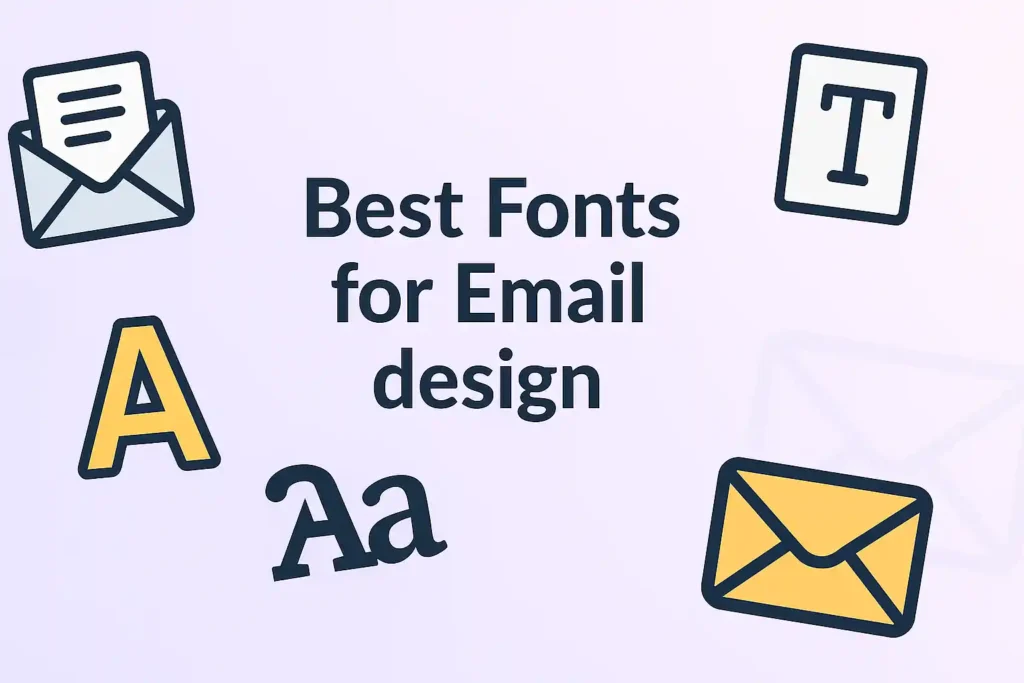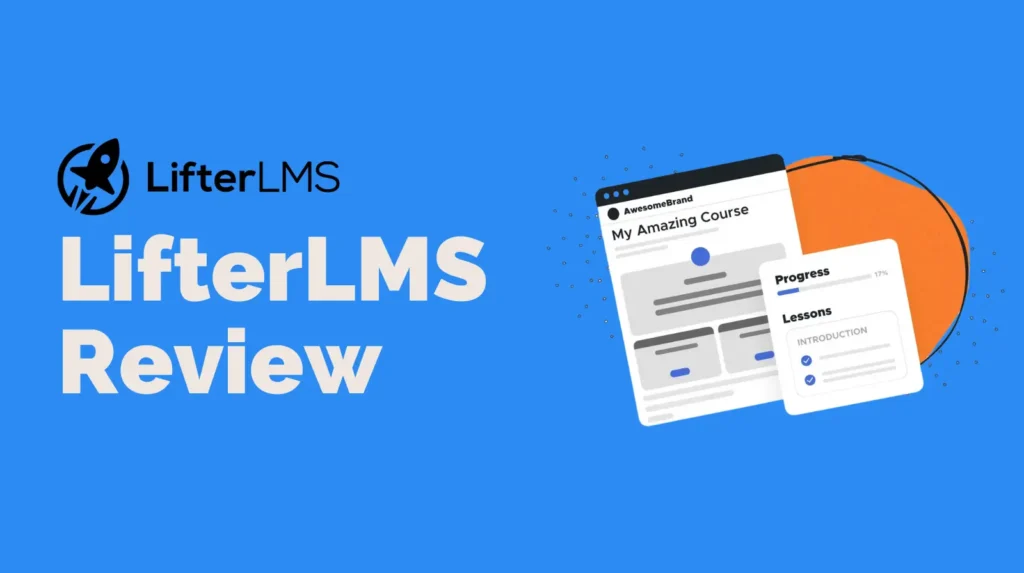When it comes to sending professional or marketing emails, the best font for emails can make a world of difference. Email typography isn’t just about choosing something that looks good. It’s about making sure your message is easy to read, accessible on all devices, and aligned with your brand identity.
In this guide, we’ll explore everything you need to know about the best font for emails including how to pick one, what makes a font reader-friendly, and which fonts work best across platforms. Whether you’re a marketer, a designer, or just someone who sends a lot of emails, choosing the right font can significantly increase your open and response rates.
Why Choosing the Best Font for Emails Matters
The first impression your reader has of your email comes not from the message but from its look. Email typography plays a crucial role in determining whether your recipient will read your message or ignore it.
A good email font:
- Increases readability
- Reflects professionalism
- Works well across devices
- Supports your brand image
- Encourages user engagement
Using the best font for emails shows that you care about details. It ensures that your content is received clearly and effectively.
What Makes a Font the Best for Emails?
Not all fonts are equal, especially when it comes to email. Here’s what to look for.
Readability
Fonts need to be easy to read on various screen sizes. Simple, clean fonts work best. Avoid overly stylized fonts which may look impressive in print but fail on digital screens.
Universality
Choose fonts that are supported across all major email clients like Gmail, Outlook, Apple Mail, and others. If your chosen font isn’t supported, your message may appear completely different.
Professional Appearance
Your email should look trustworthy and consistent. Fonts that are too playful or artistic can reduce credibility unless you’re targeting a very specific audience.
Mobile Compatibility
Over half of emails are read on mobile devices. The best font for emails should be legible even on smaller screens.
Web-Safe Fonts vs Custom Fonts in Emails
There are two main categories of fonts used in email.
Web-Safe Fonts
These are fonts that are pre-installed on most operating systems. They’re widely supported across devices and email clients. This makes them the safest and most reliable choice for most email campaigns.
Common web-safe fonts include:
- Arial
- Verdana
- Times New Roman
- Georgia
- Tahoma
- Trebuchet MS
- Courier New
Custom Fonts
Custom fonts offer more personality and uniqueness. However, they are not supported by all email clients. If you use a custom font, you must set a fallback web-safe font in case it doesn’t load.
While they look great, using custom fonts in email comes with risks unless your audience is using modern and compatible devices.
Top Picks: Best Font for Emails
Here are the most recommended fonts that combine readability, design, and compatibility.
Arial – The Classic Choice
Arial is one of the most common fonts and for good reason. It’s clean, simple, and readable across all devices and email clients. It’s a sans-serif font, making it easy to scan, especially in long-form emails.
Why it works:
- Excellent readability
- Widely supported
- Clean and professional look
Verdana – Designed for Digital
Verdana was created for screens, not print. It has wide letter spacing and large characters, which enhance readability even at small sizes. That makes it perfect for both desktop and mobile emails.
Best for:
- Clear reading experience
- Mobile-friendly layouts
- Newsletters and updates
Georgia – Elegant and Reliable
If you want to go with a serif font, Georgia is a great choice. Unlike Times New Roman, Georgia was made for digital use. It adds a touch of sophistication while remaining legible.
Why marketers love it:
- Balanced style and readability
- Great for professional or formal emails
- Good fallback option for custom serif fonts
Tahoma – Crisp and Modern
Tahoma is often used in interfaces because of its tight spacing and clean design. It’s easy to read and has a modern feel.
Perfect for:
- Business emails
- SaaS or product-based communication
- Structured formats
Helvetica – Sleek and Stylish
Helvetica is known for its minimalist appeal. It’s a designer favorite and is associated with clean, modern brands.
Use it when:
- Brand identity is key
- You want a minimal look
- Your audience is likely using Apple Mail
Trebuchet MS – Friendly Yet Professional
Trebuchet MS has a bit more personality than Arial or Tahoma but still maintains professionalism. It’s a great choice for brands wanting to show some flair.
Why choose it:
- Reader-friendly style
- Appealing look for marketing content
- Good mobile compatibility
Font Size and Line Spacing Best Practices
Choosing the best font for emails also means using the right size and spacing. Here’s how to do it right.
- Font Size: Use 14–16px for body text. Anything smaller might be hard to read on mobile.
- Line Spacing: Aim for 1.4 to 1.6 line height to improve scan-ability.
- Heading Sizes: Make sure headings are clearly larger than the body for proper hierarchy.
Consistency in sizing and spacing makes your email easy to navigate and digest.
Fonts to Avoid in Email Typography
Just as there are fonts you should use, there are also fonts to avoid. These might look fun or decorative, but they don’t serve the purpose of clear communication.
Avoid these in most email situations:
- Comic Sans
- Papyrus
- Cursive fonts
- Impact
- Brush Script
These fonts are either too casual, too hard to read, or too outdated for professional or marketing emails.
How to Test Fonts in Email Campaigns
Before finalizing a font for your entire campaign, test it thoroughly.
A/B Testing
Use A/B testing in your email marketing tool to send the same content using two different fonts. Measure open rates, click-through rates, and response.
Render Testing
Check how your font looks across different email clients and devices. Tools like Email on Acid or Litmus can show you exactly how your email appears.
Pairing Fonts in Email Design
Sometimes, using two fonts can help your email stand out. But font pairing should be done carefully to avoid clashing styles.
Good pairings include:
- Heading: Georgia, Body: Arial
- Heading: Trebuchet MS, Body: Verdana
- Heading: Helvetica, Body: Tahoma
Keep one serif and one sans-serif, and make sure both are web-safe and legible.
Brand Alignment and Email Fonts
If your brand already uses specific fonts, try to align your email typography with that style. Many brands use custom fonts on websites and print, but simplify to web-safe fonts for emails.
Ensure consistency in tone, weight, and spacing. Your email typography should reflect the same professionalism and mood as your overall brand presence.
Accessibility in Email Typography
The best font for emails must also consider accessibility. Users with visual impairments need fonts that are:
- High in contrast
- Clear in structure
- Properly spaced
Avoid thin fonts and colors with low contrast ratios. Also, make sure your font doesn’t rely on color alone to convey meaning.
Tips to Improve Typography in Emails
- Stick to one or two fonts
- Always define a fallback font
- Use proper headings and hierarchy
- Avoid centered text for long paragraphs
- Choose font colors that are easy on the eyes
These small changes in your email typography can drastically increase user interaction.
Conclusion
Choosing the best font for emails isn’t about picking the prettiest option. It’s about making your message accessible, readable, and trustworthy. Fonts like Arial, Georgia, and Verdana offer excellent readability and cross-platform support. They ensure your email looks good whether it’s opened on a laptop or a phone.
Email typography is a small but powerful tool. Use it well and you’ll notice improvements in engagement, professionalism, and overall user experience. Test, adapt, and keep your reader’s comfort in mind. Your font choice is more than a style decision. It’s a communication strategy.








